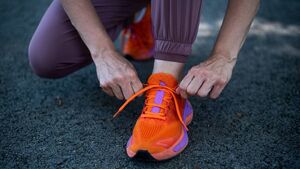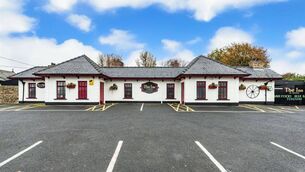Fit Focus: Exercise is the most powerful therapy

Close up of sporty woman tying shoelace while kneeling outdoor
In an age where mental health awareness is rightly at the forefront, we are surrounded by a lexicon of solutions: therapy, medication, mindfulness apps, and wellness retreats.
These tools are invaluable and life-changing for millions.
Yet, we often overlook the most accessible, cost-effective, and potent antidepressant ever created — one that requires no prescription, has no waiting list, and comes with a stunning list of side benefits. It is, quite simply, movement.
The science is no longer anecdotal; it is overwhelming. Countless studies have demonstrated that regular physical exercise is staggeringly effective at alleviating symptoms of depression and anxiety.
It doesn’t just offer a temporary distraction; it performs a profound biochemical overhaul on the very systems that govern our mood.
The mechanism is a powerful cocktail of neurochemistry. When we exercise, our bodies release endorphins, those famed neurotransmitters that act as natural painkillers and mood elevators—often dubbed the "runner's high".
But the benefits run far deeper than a fleeting euphoric feeling. Exercise also stimulates the release of key neurotransmitters like serotonin, which regulates mood, sleep, and appetite, and dopamine, which governs motivation and pleasure — both of which are often critically low in those experiencing depression.
Furthermore, exercise acts as a fertilizer for the brain. It promotes the release of a protein called Brain-Derived Neurotrophic Factor (BDNF). Think of BDNF as Miracle-Gro for your neurons.
It encourages the growth and resilience of brain cells, particularly in the hippocampus, a region vulnerable to shrinkage in depressed individuals.
In essence, exercise doesn’t just change your brain’s chemistry; it helps to heal its very structure.
For anxiety, the effects are equally profound. The act of raising your heart rate and breathing heavily through physical exertion is, in a controlled way, mimicking the symptoms of a panic attack.
By repeatedly exposing yourself to these sensations in a positive context, you teach your brain and body that a racing heart and shortness of breath are not necessarily precursors to doom.
You build a tolerance to the physical feelings of anxiety, effectively robbing them of their power.
A brisk walk or a session on the rowing machine becomes a form of exposure therapy, building resilience with every step and stroke.
Yet, to reduce exercise to mere biochemistry is to miss half of its magic. The psychological victories are just as critical. Depression is a master liar, convincing you of your own powerlessness.
Anxiety builds walls, making the world feel threatening and small. Exercise is an act of defiance against both.
Completing a workout, no matter how modest, is a tangible accomplishment. It is a direct rebuttal to the voice of depression that says, “You can’t.” It is a reclamation of agency.
Each time you choose to move, you are voting for yourself. You are asserting control over your body and, by extension, a piece of your mind. This builds a powerful momentum of self-efficacy that can bleed into other areas of life.
It also provides a crucial rhythm and structure to days that depression can otherwise render formless and empty.
The simple act of scheduling a daily walk creates a pillar around which to build a day, a commitment that gets you out of bed and into the world.
For anxiety, the mindful, repetitive nature of movement — be it the rhythm of feet on pavement or the focus required to complete a set of lifts — acts as a moving meditation, pulling you out of the cycle of catastrophic future-tripping and anchoring you firmly in the present moment.
Of course, this is not to say that exercise is a panacea that replaces other vital forms of treatment. For many, a combination of therapy and medication is essential and life-saving. But for others, it can be a first line of defence, and for everyone, it is a powerful complementary tool.
The barrier to entry is blessedly low. This therapy does not demand a marathon or a gym membership. It asks for a twenty-minute walk in the fresh air.
It is a dance party in your living room, a bike ride with a friend, or a YouTube yoga video in the morning quiet. The "best" exercise is not the most intense; it is the one you will consistently do.
In a world searching for complex solutions, the simplest one might be the most powerful.
The path to a quieter mind and a lighter spirit may not always be found on a therapist’s couch or in a pill bottle.
Sometimes, it’s waiting for you, right at the end of your driveway, in the soles of your sneakers. All you have to do is take the first step.






